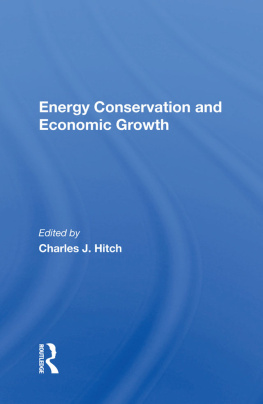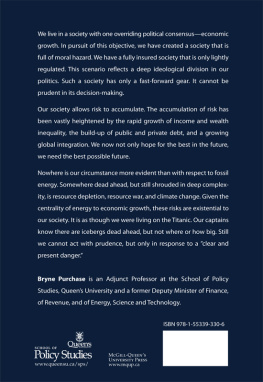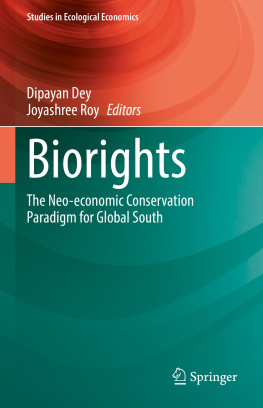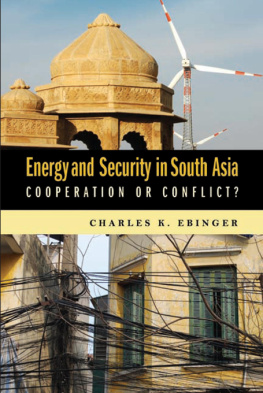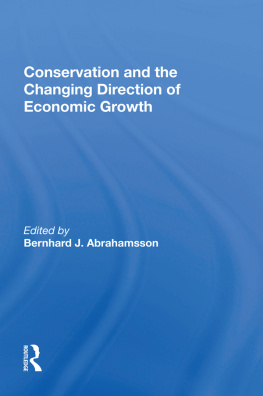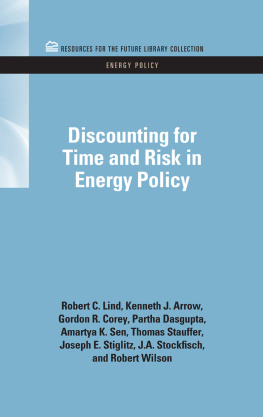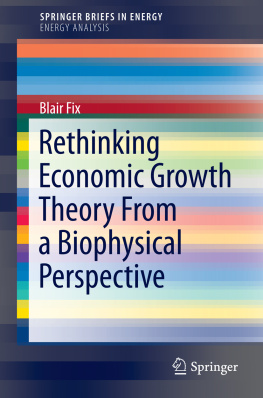Charles J Hitch - Energy Conservation and Economic Growth
Here you can read online Charles J Hitch - Energy Conservation and Economic Growth full text of the book (entire story) in english for free. Download pdf and epub, get meaning, cover and reviews about this ebook. year: 2021, publisher: Routledge, genre: Politics. Description of the work, (preface) as well as reviews are available. Best literature library LitArk.com created for fans of good reading and offers a wide selection of genres:
Romance novel
Science fiction
Adventure
Detective
Science
History
Home and family
Prose
Art
Politics
Computer
Non-fiction
Religion
Business
Children
Humor
Choose a favorite category and find really read worthwhile books. Enjoy immersion in the world of imagination, feel the emotions of the characters or learn something new for yourself, make an fascinating discovery.
- Book:Energy Conservation and Economic Growth
- Author:
- Publisher:Routledge
- Genre:
- Year:2021
- Rating:5 / 5
- Favourites:Add to favourites
- Your mark:
- 100
- 1
- 2
- 3
- 4
- 5
Energy Conservation and Economic Growth: summary, description and annotation
We offer to read an annotation, description, summary or preface (depends on what the author of the book "Energy Conservation and Economic Growth" wrote himself). If you haven't found the necessary information about the book — write in the comments, we will try to find it.
Energy Conservation and Economic Growth — read online for free the complete book (whole text) full work
Below is the text of the book, divided by pages. System saving the place of the last page read, allows you to conveniently read the book "Energy Conservation and Economic Growth" online for free, without having to search again every time where you left off. Put a bookmark, and you can go to the page where you finished reading at any time.
Font size:
Interval:
Bookmark:


- 1 The Imperative of Energy Conservation for Economic Growth
- 2 The Consistency of Economic Growth and Energy Conservation Technology
- Introduction
- Planning Target
- International Energy Comparisons and Conservation Potential
- New Technology Integration
- Planning Philosophy
- Economic Growth and the Quality of Life
- Economic Growth and Technology
- Energy Conservation Technology
- Energy Availability
- Conclusions
- References
- 3 Energy and Full Employment
- A Prima Facie Argument
- The Effects of a Rise in Relative Price of a Major Basic Commodity: A Few Historical Illustrations
- Energy-Economy Models and the Energy Problem of the United States
- Required Energy Investment and the Return to Full Employment
- Energy Investment: The Impact on the Regions
- Conclusions
- 4 Lessons of History and Other Countries
- 5 Post-Petroleum Prosperity
- 6 The Fable of the Elephant and the Rabbit?
- Energy-Economy Interactions
- The Elephant and the Rabbit?
- Empirical Evidence on Elasticities
- Concluding Comments
- References
- 7 Adjusting Capital Stock to Higher Energy-Using Efficiencies
- Background
- A General Approach to the Energy Demand Forecast Problem
- The Residential Sector
- The Industrial Sector
- The Commercial Building and Transportation Sectors
- The Integrating Tool
- Preliminary Results
Font size:
Interval:
Bookmark:
Similar books «Energy Conservation and Economic Growth»
Look at similar books to Energy Conservation and Economic Growth. We have selected literature similar in name and meaning in the hope of providing readers with more options to find new, interesting, not yet read works.
Discussion, reviews of the book Energy Conservation and Economic Growth and just readers' own opinions. Leave your comments, write what you think about the work, its meaning or the main characters. Specify what exactly you liked and what you didn't like, and why you think so.

